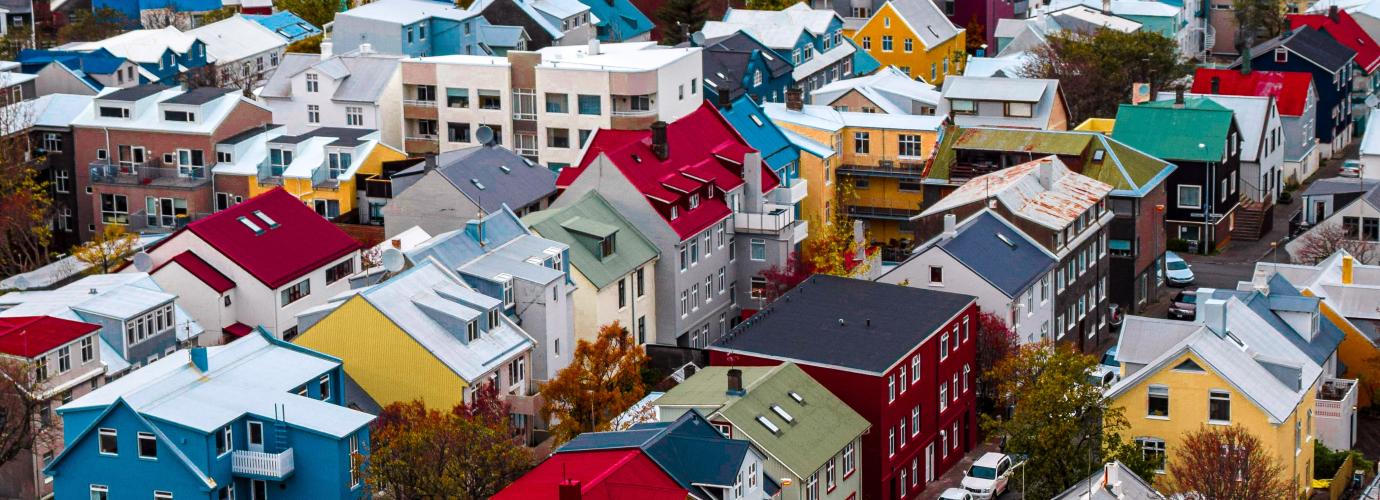Current political situation
Althingi, the Icelandic parliament, is comprised of 63 members elected for a period of four years. Parliamentary elections in Iceland were last held in November 2024. Six parties won seats in Alþingi but two parties that had previously held seats, the Left-Green Movement (Vinstrihreyfingin – grænt framboð) and the Pirate Party (Píratar), failed to obtain representation. The Social Democratic Alliance (Samfylkingin) won the most seats (15) and formed a coalitional government with the People’s Party (Flokkur fólksins) and the Liberal Reform Party (Viðreisn), who won 10 and 11 seats, respectively. Kristrún Frostadóttir, the leader of the Social Democratic Alliance, is the current Prime Minister. The parties in Althingi are displayed in the table below.
Political parties represented in Alþingi, 2025
|
Political party |
Seats in Alþingi (as of Feb 2025) |
|---|---|
| The Social Democratic Alliance (Samfylkingin) |
15 |
|
The Independence Party (Sjálfstæðisflokkurinn) |
14 |
|
The Liberal Reform Party (Viðreisn) |
11 |
|
The People’s Party (Flokkur fólksins) |
10 |
|
The Centre Party (Miðflokkurinn) |
8 |
|
The Progressive Party (Framsóknarflokkurinn) |
5 |
Source: Alþingi
Current economic situation
The Icelandic GDP per capita was €76,350 in 2023 (at market prices), more than twice the European Union average of €38,130 (source: Eurostat). GDP per capita and GDP growth have traditionally been high in Iceland compared to other European countries. By the same token, unemployment rates have traditionally been low (even as low as under 2%). In 2023, the unemployment rate for ages 16-64 was 3,5% (source: Statistics Iceland).
The annual growth of GDP per capita in Iceland was 2,4% in 2023. The economy was negatively affected by the COVID-19 outbreak in 2019 and 2020 but has recovered well in the years since, as seen in the table below.
GDP per capita growth, 2015-2023
| Year | GDP per capita, volume change on previous year |
|---|---|
| 2023 | 2,4% |
| 2022 | 6,5% |
| 2021 | 3,7% |
| 2020 | -8,1% |
| 2019 | 0,1% |
| 2018 | 2,3% |
| 2017 | 1,7% |
| 2016 | 4,8% |
| 2015 | 3,4% |
Source: Statistics Iceland
While GDP per capita is comparatively high, it is important to keep in mind that the Icelandic economy is small in size. The main export sectors are tourism, seafood, and aluminum. The tourism sector has grown rapidly in recent years – the number of international visitors grew from 566 thousand in 2011 to nearly 2,3 million in 2024 (source: Icelandic Tourist Board).
Public expenditure on education
In 2023, public expenditure on education amounted to 6,2% of the total gross domestic product. Thereof, 0,8% was spent on pre-primary education, 2,1% on primary education, and 1,9% on secondary education. These figures are relatively stable between years (see table below).
Public expenditure on education, 2000-2023
| Year | 2000 | 2005 | 2015 | 2016 | 2017 | 2018 | 2019 | 2020 | 2021 | 2022 | 2023 |
|---|---|---|---|---|---|---|---|---|---|---|---|
| Public expenditure on education as % of GDP | 6,3% | 7,1% | 6,2% | 6,1% | 6,4% | 6,4% | 6,5% | 7,6% | 7,1% | 6,4% | 6,2% |
Source: Statistics Iceland
Educational attainment
In 2023, 44,5% of the adult population (ages 25-64) had obtained a tertiary education (ISCED levels 5, 6, 7, and 8). 35,1% had completed upper secondary education (ISCED 3 and 4) and 20,4% had a basic education (ISCED 1 and 2). The educational attainment of the Icelandic population has risen considerably over the past decades, as seen in the table below.
Educational attainment of the Icelandic population, 2005-2023
| Year | 2005 | 2010 | 2015 | 2020 | 2023 | |
|---|---|---|---|---|---|---|
| % of the population ages 25-64 with: | Basic education – ISCED 1, 2 | 33% | 30,8% | 26,6% | 24,1% | 20,4% |
| Upper secondary education – ISCED 3, 4 | 37,9% | 37,8% | 36,4% | 35,3% | 35,1% | |
| Tertiary education – ISCED 5, 6, 7, 8 | 28,6% | 31,3% | 37% | 40,7% | 44,5% |
Source: Statistics Iceland
References
Alþingi: Political Parties [accessed in February 2025]
Eurostat: Gross domestic product at market prices [accessed in February 2025]
Statistics Iceland: Gross domestic product and Gross national income 1995-2023 [accessed in February 2025]
Statistics Iceland: Activity rate, employment rate, underemployment rate and unemployment rate by year 2003-2023 [accessed in February 2025]
Statistics Iceland: Public expenditure on education 1998-2023 [accessed in February 2025]
Statistics Iceland: Educational attainment of the population according to ISCED 2011 2003-2023, percentage distribution [accessed in February 2025]
Icelandic Tourist Board: Number of foreign visitors [accessed in February 2025]

